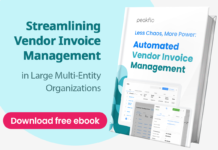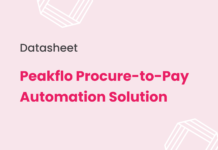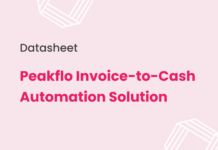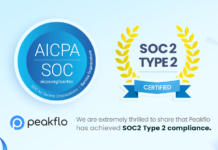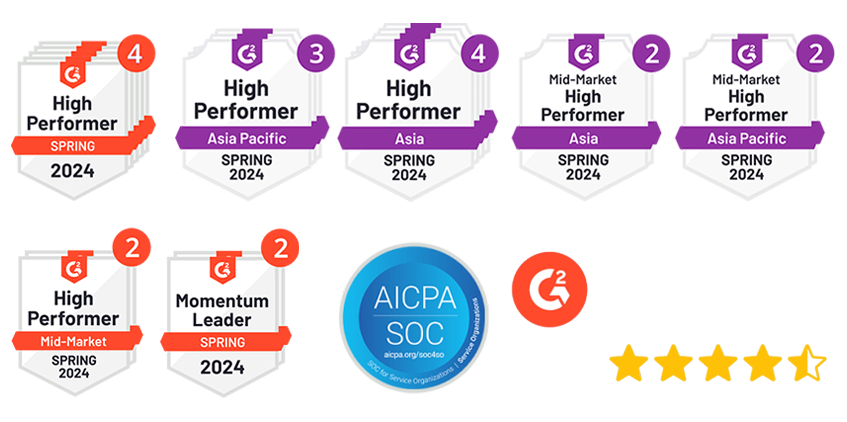Maintaining financial health requires an effective expense management process for both individuals and organizations. However, many people overlook certain costs, which can result in losses. In the United States, many workers forget about certain expenses, so they miss out on getting money back.
A survey by Unit4 found that the average U.S. worker leaves $390 unclaimed annually due to unfiled expenses. Additionally, nearly 20% of workers across the nation leave at least some of their claims unfiled. Keeping track of all your work expenses and knowing your company’s rules about spending money is important. This helps make sure you get back any money you’re supposed to.
Understanding the foundations of expense management is essential for efficiently handling business expenses. Next, we’ll learn what expense management means, why it’s important, and how it helps businesses follow rules and plan their money wisely.
What is Expense Management?
Expense management is the way you keep track of and handle all the money your business spends. This includes things like travel, office supplies, and fun activities for work. It helps make sure that all spending follows the business’s rules and stays within budget.
Why is Expense Management Necessary?
- The Value of Cost Control: It is important to manage expenses well for many reasons. It helps businesses keep track of how much they are spending. Without careful management, it can be easy to overspend. Proper expense management process also helps companies save money in the long run. By controlling costs, you can stay profitable. It also makes sure they follow the rules and avoid legal problems. Lastly, it can prevent mistakes, like missing receipts or duplicate reports.
- Financial Control: By tracking costs and identifying areas where they can be cut, you can increase profitability. Keeping track of expenses helps businesses plan their budgets by showing where money is being spent. Keeping accurate records also helps follow company rules and tax laws, reducing the chance of mistakes.
Example of Tools for Expense Management
Using specialized software solutions can help your expense management process run more smoothly.
For example, Peakflo offers a platform that helps with everything. It automatically tracks expenses, handles approval steps, and creates reports. This makes managing money easier and faster for businesses. With this tool, you can effectively manage your spending, ensuring accuracy and compliance. Using these tools makes it easier to follow rules, plan better, and keep track of money wisely.
Now that we know what expense management is, let’s look at the important steps that help businesses handle their money smoothly. From setting rules to tracking and paying back expenses, each step helps control costs.
Core Processes in Expense Management
Managing expenses is an important part of running a business. It helps make sure that money is spent wisely and follows company rules and budgets. The process includes several key steps that help businesses keep track of their money and make daily tasks easier. Let’s explore the main procedures that are involved:
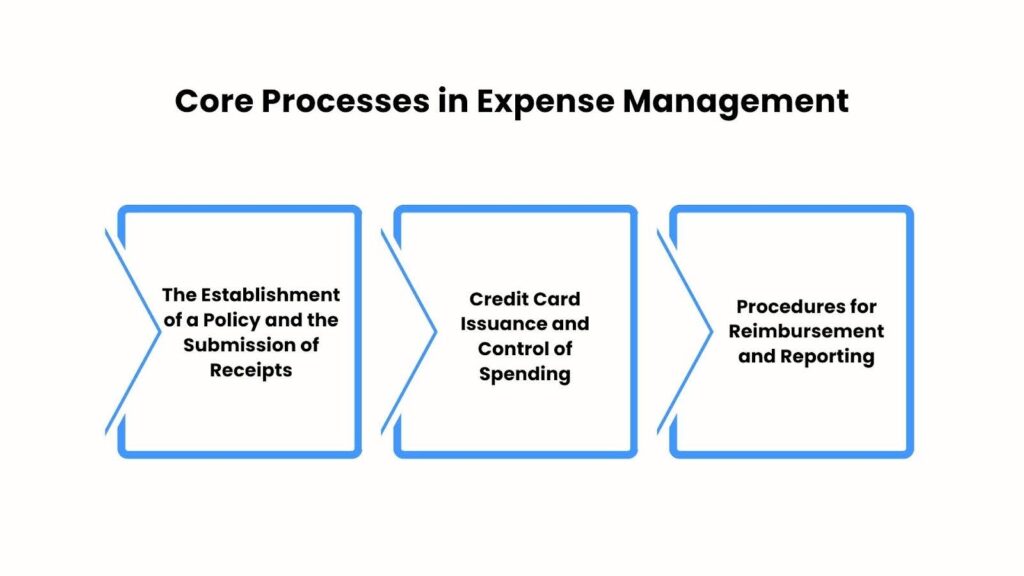
1. The Establishment of a Policy and the Submission of Receipts
- Establishing explicit spending guidelines is the first step in managing expenses.
- These rules explain what paperwork is needed, how to submit expenses, and what counts as an allowed expense.
- Make sure your staff members are aware of these policies to prevent misunderstandings and false claims.
- Submission of receipts is essential to this procedure. You or your staff must keep and submit receipts for each purchase made on the company’s behalf.
- By automating the receipt capture and submission process, digital solutions such as Peakflo can help.
- With a mobile app, you can quickly take a picture of your receipt and upload it. This makes submitting receipts faster and helps prevent losing important papers.
2. Credit Card Issuance and Control of Spending
- Credit cards are really helpful for businesses, especially when employees need to travel or buy things for the company. Giving employees credit cards helps you track and control spending instantly while keeping all expenses in one place.
- With company-issued credit cards, expense control involves establishing spending caps and category limitations.
3. Procedures for Reimbursement and Reporting
- The last phase of cost management is reimbursement. Workers submit their claims for reimbursement, and you ensure they adhere to corporate guidelines.
- To keep employees happy, reimbursement requests should be handled quickly and correctly.
- Following reimbursements, reporting procedures are followed. You will require thorough expense reports that allow you to see your spending trends.
These key steps in managing money are important for a business. This includes setting clear rules, giving out credit cards, and handling reimbursements. These actions help a business control its spending. They also make it easier to stay on track with its finances.
Steps in the Expense Management Process
Effective expense management is essential to preserving an organization’s financial stability. Below is an outline of the common steps in the expense management process:
- Employee Purchase: An expense incurred for your business, such as office supplies or travel expenses.
- Creation of the Expense Report: You document the cost by creating a report with details like descriptions and receipts.
- Report Review: Your manager checks the expense report to ensure it adheres to the rules and regulations of the organization.
- Approval and Processing: The finance department processes the reimbursement or payment after approval.
- Record Keeping: The finance team tracks the expenditure for future audits and financial reporting.
Automating the expense management process with a system like Peakflo saves time and reduces errors. It streamlines approvals, expense reporting, and accounting integration for better efficiency and compliance. You can create simple rules for everyone to follow. Handling reimbursements quickly keeps everything organized. Using these tools makes the expense management process easier and more transparent.
To increase efficiency, businesses use various expense management systems. The decision to use manual, automated, cloud-based, or mobile systems depends on what the company needs.
Now, let’s explore the different types and their features.
Types of Expense Management Systems
Expense management is the process of monitoring and regulating the expenses that your company incurs. Maintaining financial health requires the implementation of an efficient system. Systems for managing expenses come in a variety of forms, each with unique characteristics:
Manual Expense Administration
With this old way, you have to type in the information by hand, often using spreadsheets or paper forms. Despite being simple, it can be laborious and error-prone. For instance, there is a greater chance of errors and data loss when tracking receipts by hand and entering them into a spreadsheet.
Automated Cost Control
Automated systems use software to expedite the expense reporting procedure. By sorting expenses, creating reports, and collecting details from receipts, they help reduce errors and speed up work. For example, when the software scans a receipt, it quickly adds all the details to your accounting system. This helps keep the records correct and saves a lot of time.
Mobile Spending Control
Managing your expenses while on the go is possible with mobile apps. From your smartphone, you can track your spending, take receipts, and submit expense reports. You can control your spending at any time and from any location due to this flexibility. Users can monitor spending and manage budgets straight from their mobile devices.
Cloud-Based Expense Management
Cloud-based systems allow you to easily access your data from any device with an internet connection by storing it remotely. Through frequent backups, this configuration guarantees data security and improves collaboration.
To work faster and keep things clear, cloud-based platforms help teams update and check expense reports at the same time. These platforms store all the data online, so team members can see changes as they happen. This makes it easy to track spending, reduce mistakes, and keep everyone on the same page.
Integrated Cost Control
When systems are connected, information can flow smoothly between them. This means that your accounting system can easily work with other business systems. It helps keep everything up-to-date without needing to do everything by hand. This integration improves the accuracy of the data and decreases work duplication. For example, if your accounting software and expense system work together, tracking money becomes simple.
Each time you spend or receive money, your records update on their own. You don’t have to enter numbers manually, which saves time and reduces mistakes. This keeps your financial records accurate and up to date.
These tools help you choose the one that works best for your company, making it easier to manage expenses and keeping everything accurate.
In addition to making things easier, using a good expense management system can save time and help you follow rules. The next section will look at the benefits of having a well-organized way to manage expenses.
Benefits of Efficient Expense Management
Managing expenses effectively is essential to the financial stability of your company. Process simplification can lead to several important advantages:

- Time Savings
Expedites the approval and reporting processes. Automating the expense management process accelerates workflows for approval and reporting. Using tools like Peakflo allows you to submit and approve expenses quickly. This helps you avoid delays. You can then focus more on important tasks that help your business grow.
- Financial Control
Guarantees precision and minimizes mistakes. By minimizing manual data entry through automated systems, errors are decreased. Peakflo’s platform keeps your expense data up-to-date and correct. This helps you get reliable information about your finances. You can trust the details to make better decisions.
- Compliance
Complies with tax and industry regulations. Automated expense management systems help you follow tax laws and industry standards. Features like compliance checks in Peakflo ensure that your expense reports meet all the rules. This reduces the chances of errors or missing important requirements.
- Higher Morale
Boosts employee happiness. Simplifying the expense reporting process increases employee satisfaction. With Peakflo, employees can quickly submit their expenses and get paid back on time, helping the workplace run smoothly.
- Efficient Budget Allocation
With real-time data from automated expense management, you can allocate budgets more efficiently. Peakflo’s tools help you understand where the money is going, so you can make a smarter budget. This makes it faster to get reimbursements and lightens the work for the finance team.
Despite its significance, managing expenses comes with challenges. Issues such as lack of data visibility, approval delays, and human errors can hinder financial efficiency. The next section will discuss common obstacles and their impact on the process.
Challenges in Expense Management
For your company to be financially stable, you must effectively manage your expenses. However, you may encounter many challenges in this area.
- Problems with Real-Time Tracking and Data Visibility
If you don’t keep track of how much money your business is spending, you might lose receipts, have the same reports twice, make mistakes, or even face fraud. This lack of transparency can make it more difficult to manage finances effectively.
- Data Entry Errors
Manual data entry is not only time-consuming but also prone to errors like typos and missing entries. These mistakes can render financial statements inaccurate and complicate reporting.
- Lengthy Cycles for Reimbursement and Expense Approval
Processing reimbursements and expenses may be delayed due to ineffective approval processes. Slow multi-level approvals could negatively impact financial operations and employee satisfaction.
How Can Peakflo Assist in Expense Management?
For a business to be financially stable, it needs to manage its spending well. But it can be hard because of problems like not tracking expenses properly, making mistakes when entering data, and slow approvals. Peakflo’s Travel and Expense Reimbursement solution offers smart solutions to overcome these challenges. Here’s how Peakflo can elevate your expense approval workflow:
- Expense Automation: Peakflo automates the submission and reimbursement of travel expenses, reducing manual tasks for both employees and finance teams. This automation speeds up the entire process, ensuring employees are reimbursed on time.
- Per Diem Rules: Location-based daily allowances automatically enforce per diem limits. This feature helps keep travel expenses within budget and ensures that employees adhere to company-set spending caps without manual intervention.
- Integrations with ERPs: Smoothly integrate with popular ERP and accounting software, ensuring that financial workflows are smooth and consistent. This connection eliminates the need for manual data entry, reducing errors and saving time.
- Configurable Policies: Set clear expense rules that align with your company’s spending guidelines, ensuring employees understand what is reimbursable and what is not.
- Policy Adherence: Peakflo automatically flags non-compliant expenses, making sure your team follows company policies. It eliminates human error and ensures that expenses comply with established guidelines.
- Dynamic Expense Categories: The tool offers flexible categorization, allowing businesses to sort expenses based on specific needs. It ensures that your reports are organized, making it easier to track spending patterns and prepare for audits.
- Customizable Approval Flows: Custom approval workflows to suit your company’s unique needs. It ensures that travel expenses are reviewed and approved swiftly, with the correct individuals involved in the decision-making process.
- Anomaly Detection: Quickly identify unusual expenses with automatic alerts for out-of-policy spending or duplicate claims. This helps reduce fraudulent or erroneous submissions, ensuring only valid expenses are reimbursed.
Conclusion
An organization’s ability to stay financially stable depends on how well it manages its spending. By having a clear and organized plan, you can make sure all expenses are needed, reasonable, and match your business goals.
Provide thorough rules that specify what is considered a reasonable expense. This clarity ensures consistency throughout the company and helps prevent unnecessary spending. Tracking and reporting expenses can be automated with expense management software. Conduct regular audits to assess the efficiency of your spending control procedures. This proactive approach helps keep your finances under control.
Promote an environment where employees understand their responsibility to manage spending wisely. By using these strategies, you can set up a great way to manage your expenses that helps your company grow and stay financially stable.


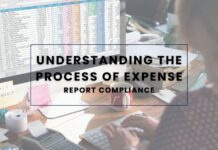







![Why AI Sales Calls Are Making Good Sales Reps Even Better [2025 Guide] ai sales calls](https://blog.peakflo.co/wp-content/uploads/2025/09/65168cf6-3001-4733-8cbc-12d5684cf449-218x150.webp)







